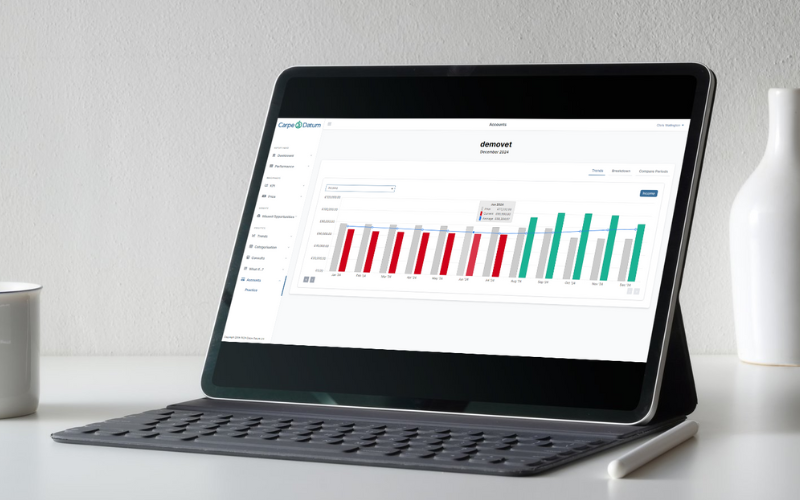Setting up and running your own independent veterinary practice may have become the road less travelled in recent years. But independent practice ownership is still one of the most fulfilling paths a veterinary professional can take in his or her career, and a journey that’s well worth making…
WHAT A YEAR 2020 has been; so many contradicting extremes. On the one hand, resilience and tremendous bravery in how people have coped with the pandemic. On the other, struggle, anxiety and exhaustion at levels unknown in recent decades.
The Government brought in support and funding to help small businesses, families and the economy, and we have also seen significant initiatives from business owners committed to thriving.
The year 2021 finds corporates back in the buying game, with a recession looming over the coming months and a potential 30 per cent downturn in the economy. But it is not all doom and gloom. We have seen an increase in people evaluating their work-life balance, organisations reviewing their contribution to a healthier environment, funding becoming more available and a fresh batch of inspired start-ups beginning to emerge.
And why not? The veterinary sector has seen unprecedented growth in profit and considerable changes in veterinary services as they evolve to now provide a combined digital and face-to-face customer experience; it’s an exciting and dynamic time to become the master of your destiny.
When it comes to deciding to start a practice, the questions I hear most often are “can I do this?” and “where do I start?”. In recent months, the other frequent question “am I mad to even think about starting a practice in a pandemic?” has also become a regular feature in my conversations with vets.
My answers: yes, you can and no, you are not mad. The pandemic has not stopped this being an achievable dream and, in many ways, has provided the extra clarity around what is important to you and what you want to achieve in life that you need to make this big life decision.
Cornerstones of success:
- What is your vision for your practice?
- Who will your clients be?
- What experience do you want to give them?
- When do you anticipate making a profit?
- How will you manage your finances?
- Have you got the right people working with you?
With so much to consider, this is not a decision to take lightly or quickly. Making the jump from veterinary professional to practice owner can take years, and generally consists of three stages.
Stage one
“I’m ready to be my own boss, but don’t know where to start”
What is your vision? Why do you want to start your practice? What will it look and feel like in 10 years? What is your WHY? How will the business fit around your personal life? Mapping this on to a life vision orbit can be useful; get it written down on paper to make it happen.
- What is your unique offering? Are you looking to offer a small animal practice, mixed practice, equine, exotics or a mobile service? Will you offer an out-of-hours? What type of client would you like and what will your position be in the veterinary market? What will differentiate you from others? A SWOT analysis can help evaluate your competitors and determine your strengths, weaknesses, opportunities and threats.
- What skills do you have and what do you need to outsource or develop? Being realistic about your abilities, and areas of strength and (even more importantly) weakness, will be crucial to your future success, so no rose-tinted glasses here – be honest. This approach will help you decide who you need to support you through the first phase of your journey.
Stage two
” I’ve made the decision; I have potential premises, but need funding”. You might have a location, even premises, in mind already; or you might know the town, village or even field you want.
Now is an excellent time to start working on your business plan; a one-stop document to include your SWOT analysis, your ideal team and your vision (which should be shared with your team members and your team of professional advisors, and used for recruitment).
A robust business plan considers pricing strategy, a detailed cash flow forecast, anticipated profit and loss, margins, contingency plans, equipment list of assets, salaries, fixed costs, a team list, plans for repairs and maintenance, a list of suppliers and an idea of your branding, as well as your personal budget/salary.
Planning at this level does not need to be overwhelming, though. Tackle one thing at a time and as you progress, all these elements will form your blueprint; your go-to document – a significant step in achieving the autonomy, mastery and independence you want. This document will support your cash flow forecast and annual budget – the core of your ongoing fiscal management over the coming months.
Your practice’s location is also key to success, so make sure you have asked and answered the right questions before making any final decisions; this relies on research.
Is the location residential or rural, and is it visible to passing footfall? Will you purchase, lease or build your premises and would it enable you to expand in the future if you want to? Is the car parking sufficient for practising social distancing? Is the building usable already or will it require a change of use? Recent changes in planning permission may affect you, so remember to check with your local authority early in the process.
The level of capital you start with may determine some of these answers for you, but whatever the budget, simply knowing the answers will allow you to plan accordingly.
Finally, your plan needs to encompass “what if?” scenarios. Banks will rightly want to know what you plan to do should the worst happen. Backups, contingencies and security plans are therefore paramount.
What if a team member is sick long term, how will you cover the overheads? What if you fail to make a good impression and your customers do not return? What if your business suffers an accident, such as fire or flood?
Regardless of whether you are seeking financial help, it is vital to do this contingency planning – not only to secure the sustainability of your business model, but also for your peace of mind.
Stage three
“I am ready to promote and launch my practice – help!”
Now is the time to create a project plan and confirm your operational timelines.
It is also time to promote your practice and build relationships with your potential clients in the local community, who need to feel part of your journey every step of the way. It is best to aim for a 12-month marketing plan in action, a 3 to 6-month pre-launch plan and a 3 to 6-month post-launch plan. Implementing these plans will prevent a tumbleweed moment shortly after opening. It is not easy, but it delivers long-lasting positive results when coordinated in line with your overall business plan.
You will need to develop a website, social media pages, adverts, digital content, shop signage and as much pre-launch traction as you can muster from within the local community. If finances allow it, be brave and outsource – you cannot do everything yourself. You identified your ideal client earlier in your planning; now you can design your ultimate client journey.
Recruitment will be another critical element of this phase. When working out your team, ensure you have enough of you to accomplish everything, maintain excellent clinical and client care, and keep costs as low as possible. Your objective is to have a team that works with you, rather than for you; a team that will run alongside you in this venture, not make the journey feel harder.
Find out what motivates the people you hire and consider using competency-based questions at the interview in addition to focusing on skills. Personal profiling will allow you to invest in people with strengths and passions that will complement your business; a receptionist that loves social media and blogging, a nurse who likes to see things completed or a vet who loves a spreadsheet. This type of psychometric profiling can help you get the right team “fit” and reduce potential recruitment costs after your initial launch by utilising the strengths of the people you have hired.
Do not be afraid to ask for help. Consultancies such as Vet Dynamics have taken people along this journey many times before, and will be happy to share their expertise and guide you from the start. Finding someone you “click” with and trust – someone who understands your vision and the challenges you will face – could be the difference between the dream and the reality.
Once your practice is open, set aside time in your diary from day one for yourself, for communication and for management time (planning). My final advice is this: strive to play to yours and your team’s strengths; recruit quality, not quantity; do not do this alone; and have a contingency plan. If you manage to achieve these things, your new practice will be in a stronger position.
It can be daunting setting up a practice; it involves challenging work, commitment to your vision and gaining support. It could be easy to struggle or fail if you do not lay out everything well in advance and plan for every eventuality.
And yes, it may still be the road less travelled, but independent practice ownership can also be the most fulfilling path a veterinary professional can take in his or her career, and a journey that’s well worth making.
By Whilmari Swift
Special thanks to VBJ – pages 8-10 in their February 2021 edition.
For more information on how we can help you on your start-up journey, please click here.





